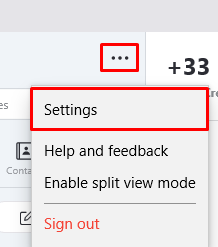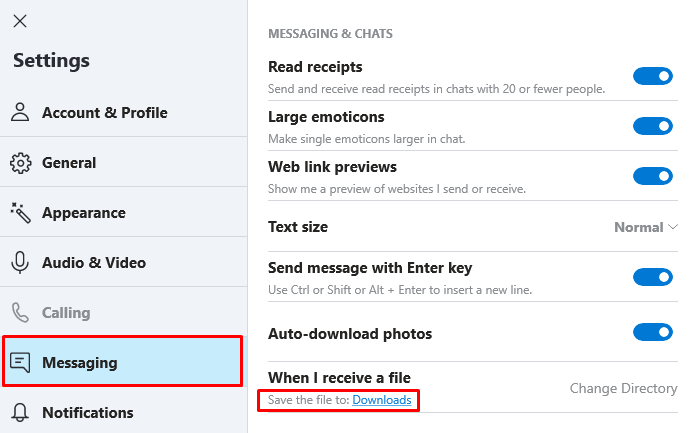Skype
Skype Received Files Folder
Skype is software that mainly facilitates instant messaging and video calls that was initially launched in summer 2003. Being one of the most popular video call programs, it has over 20 million active daily users and, to date, has had over 1 billion downloads worldwide.
Originally created by Janus Friis and Niklas Zennström from Europe, the Skype software and brand was acquired by Microsoft for $8.5 billion US dollars. Since then, Skype has become integrated into many of Microsoft's products, perhaps the largest integration is its promotion to a native app in Windows 10, which means it now comes pre-installed when you install Windows.
Skype Shared Files (Download) Folder
The folder that Skype downloads shared files to varies based on the version of Skype you're running, and your operating system. You can check to find your folder by clicking the ellipsis in the top left of your Skype window and clicking Settings:

Once in your settings, go to the Messaging tab, and you can find the name of the folder your files will go into under "When I receive a file":

If the above is not helpful, find the usual default folders for Skype received files below:
Windows 10
In Windows 10 (app store) versions of Skype your files will, by default (in most cases), go into the following folder:
%UserProfile%\Downloads
To access that folder, simply open up a File Explorer window and paste it into the address bar at the top (then hit ENTER).
Windows 7 and Other Versions of Windows Skype
For older versions of Skype, files were saved in this directory:
%AppData%\Skype\My Skype Received Files
You can open that path up by:
- Hitting
WINDOWS+Ron your keyboard (WINDOWSbeing the Windows key that opens the start menu) - Pasting the path into the text field
- Hitting the
OKbutton
Mac
Newer versions of Skype on Mac will save your received files to the Downloads folder, but older verions will store them at the following path:
~/Library/Caches/com.skype.skype/fsCachedData
To open that path, open Finder, press COMMAND + SHIFT + G, paste it in, then hit Go.
